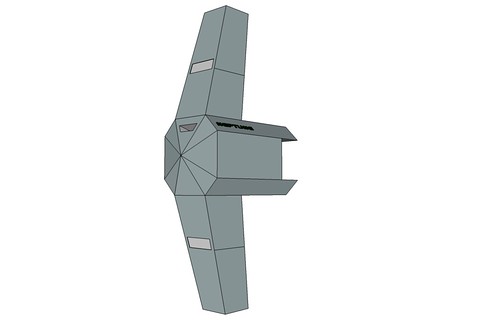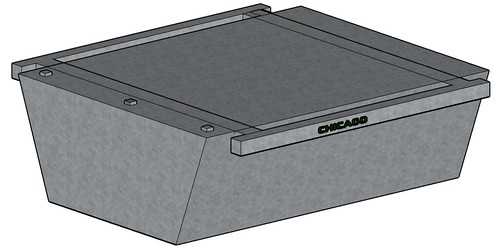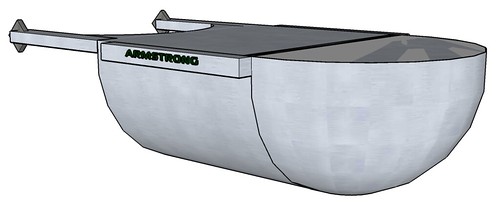The advantage of my travel is that I’m actually not all that busy at work (I’m essentially on-site tech support for my program’s software during a training rotation and they know what they’re doing now). I’ve finally finished transcribing notes about the universe I created to write stories (hopefully a published novel at some point) in.
If there’s any interest, I could post it here to see what people think.
First Contact Scenarios
Scenario One – Discovery of ruins of unknown origin
Scenario Two – Detection of signal in unknown language
Scenario Three – Encounter with an unknown automated probe
Scenario Four – Encounter with a manned alien vessel of unknown origin
Scenario Five – Discovery of a space station occupied by an unknown species
Scenario Six – Discovery of planet occupied by an unknown species
Scenario Seven – Encounter with an unknown species resulting in hostilities.
Governmental Structure
Consortium of Worlds
The Consortium of Worlds is the allied government consisting of the Terran Alliance, Granteth Confederation, and Fernok Republic. While each of those governments is autonomous, the Consortium exists to manage jointly-founded colonies and address other issues of common concern. However, in practice, much of its time is spent moderating disputes among the member states.
Mentras Lo
The Mentras Lo is the executive council of the Consortium of Worlds. It meets on Loron 2, the first planet jointly colonized by all three species. The council is moderated by the longest-serving member. In situations where that member of the Mentras Lo is unavailable moderation duties fall to the next most senior member. It consists of nine members divided into two categories.
The first group is representatives of the three member governments. Each of these three members is appointed by their government and serves until they are either recalled by their government or chooses to resign.
The other six members are ministers. Each minister has a specific area of responsibility and is elected by the other members of the council. Typically, they are selected for their achievements in the field they are responsible for. Ministers can be removed by a 2/3 vote of the other members of the Mentras Lo.
Current Ministerial Positions:
Military Liason (The only “minister” not referred to by that title, the Military Liason must be an active duty member of one of the three states militaries).
Minister of Colonial Affairs
Minister of Justice
Minister of Science and Technology
Minister of Finance
Minister of Trade
Planets:
Loron 2
Lajak
Geronda
Frederika
Karonon 5
Karonon 9
Terran Alliance
The Terran Alliance was created out of the United Nations in response to the discovery of an unknown alien ship on Titan in 2110. While the Alliance originally was, much like the United Nations, a coalition of independent governments, as the three colonies in the Sol system grew, people began to identify themselves more with their planet of origin than their nation. While many nations still exist in the late 23rd Century, they are subordinate to the Alliance and exist primarily to deal with internal matters.
The Alliance’s first extra-solar colony was established on Beta Centauri 2 in 2192, followed by colonies on Vega 3 and 4 by the end of the 22nd Century.
Much of the Alliance’s advanced technology is based on, though no longer identical to, technology found on The Ship (as the vessel found on Titan is known).
Planets:
Earth
Luna
Mars
Titan
Centauris (Beta Centauri 2)
Vega 3
Vega 4
Governmental Structure
The Terran Alliance government is divided into Executive, Legislative, and Judicial branches.
Executive Branch:
The Terran Alliance’s head of state is a president elected to a five year term with a 1 term limit. If the president dies or otherwise leaves office, the Speaker of the Senate serves as acting president until a special election. The special election must occur within 3 months. The only exception to this rule is if there is less than a year before the next general election, the Speaker finishes out the president’s term.
Under the president are a number of department heads who run the various organizations that fall under the authority of the Alliance government. They are appointed by the president, but must be approved by the Senate.
Legislative Branch:
The Terran Alliance Senate consists of ten representatives from each Alliance planet for a total membership of 70. Currently, planetary senators also represent orbital facilities, though permanent inhabitants of some of the larger orbital habitats are pushing for direct representation of habitats with a large enough permanent population.
Each senator is elected to a five year term, and can serve up to three terms. Mid-term deaths and resignations are handled through interim appointments by the governor of the planet the senator was from.
Judicial Branch:
The judicial branch is made up of courts at various levels. Each planet has its own court system, but appeals that make it past the planetary level can be heard by the Terran Alliance Supreme Court if a majority of its seven members agree that they believe further investigation is warranted. Supreme Court Justices are appointed by the president and approved by the Senate and can serve up to twenty years.
Granteth Confederation
The Granteth are a tri-gendered species reminiscent of Earth reptiles, though they are warm blooded and have live births. In general, they prefer arid climates slightly warmer than humans consider comfortable. The average Granteth lifespan is 100 years, slightly above that of humans. Two of the Granteth genders are what humans would consider male, capable of impregnating members of the “female” gender.
First contact between humans and Granteth occurred in the year 2218 when a Granteth exploration ship entered the Vega system.
Genders:
Telom – Teloms are the larger of the two “male” Granteth genders. On average, they are both physically stronger and taller than either of the other Granteth genders, averaging 2.3 meters in height.
Chathesta - The chathesta are the other “male” Granteth gender. They average 1.5 meters in height, with few reaching 2 meters. What they lack in size and strength compared to the telom, they make up for in dexterity. Most Granteth doctors and craftsmen are chathesta, as their smaller hands make it easier for them to do precision work.
Molast – Granteth females are known as Molast. They average 2 meters in height and are typically more slender than either Telom or Chathesta. Much like their height, their strength and dexterity are somewhere between the Telom and Chathesta.
Planets:
Granteth
Grona
Deranwa
Terek Major
Terek Minor
Governmental Structure
Unlike either Humans or Fernok, the Granteth governmental system is not based on geographical location. Instead, each Granteth is a member of one of 112 recognized clans. Each clan has one representative in the Granteth Council. New clans can be formed at any time, but in order for the clan to be officially recognized, it must petition the Council. To ensure that all adult Granteth have representation during this transition, they are still considered members of their previous clan until the new clan is recognized. Individual Granteth are free to move from one clan to another, but that typically only happens in cases of cross-clan marriages or when a new clan is formed.
Fernok Republic
The Fernok are an avian species. While incapable of flight in Earth standard gravity, they can fly well in the .7 gravity of their mountainous homeworld. Because of this, they prefer large open spaces and build their ships larger than Human and Granteth ships with similar purposes. While the average temperature of the Fernok homeworld is lower than that of Earth, the Fernok have temperature tolerances similar to those of humans.
The Fernok have had spaceflight for centuries longer than either Humans or Granteth, but prior to contact, they had not established any new colonies for almost a thousand years.
First contact with the Fernok occurred when a joint Human/Granteth colony convoy entered a system containing a Fernok colony.
Planets:
Fernak
Flosa
Fokren
Defrok
Lenosa
Governmental Structure
The Fernok government operates on a parliamentary system. Members of the Fernok Parliament each represent approximately 50 million Fernok of voting age (redistricted every seven years, a year before general elections). The Prime Minister is elected from within the ranks of the parliament. Votes for a new Prime Minister are conducted in parliament after each general election or successful vote of no confidence.
If there’s interest in seeing more, I can post information about some of the universe’s core technologies tomorrow.







